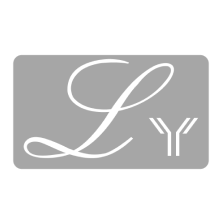Anti-Human CD45 (Clone 2B11) – Purified (PhenoCycler-Fusion (CODEX)® Ready)
- -
- -
Antibody and Reporter DetailsReactivity Species Human Host Species Mouse Concentration 0.5 mg/ml Formulation This purified antibody is formulated in 0.01 M phosphate buffered saline (150 mM NaCl) PBS pH 7.4. Storage and Handling This antibody is stable for at least one week when stored at 2-8°C. For long term storage, aliquot in working volumes without diluting and store at -20°C in a manual defrost freezer. Avoid Repeated Freeze Thaw Cycles. Applications and Recommended Usage? Quality Tested by Leinco CODEX® This CD45 (Clone 2B11) antibody is formulated to simplify the antibody preparation needed when performing a PhenoCycler® barcode conjugate. The suggested concentration is 1.0 mg/ml. Other Applications Reported In Literature ? ICC, IHC Country of Origin USA Each investigator should determine their own optimal working dilution for specific applications. See directions on lot specific datasheets, as information may periodically change. DescriptionSpecificity 2B11 + PD7/26 are reactive against leukocyte common antigen (CD45). Antigen Distribution Various cell dependent isoforms of CD45 are expressed on B cells, T cells,
subsets of dendritic cells and other antigen-presenting cells, monocytes and mast cells. Background CD45 is a 180-240 kDa glycoprotein member of the protein tyrosine phosphatase (PTP) family
known for its involvement in regulating a variety of cellular processes including cell growth,
differentiation, mitotic cycle, and oncogenic transformation. CD45 and its isoforms are vital
regulators of T- and B-cell antigen receptor signaling. It functions through its extracellular
domain or through its cytoplasmic domain and serves as a negative regulator of cytokine receptor
signaling via JAK kinase suppression. The large extracellular domain is highly glycosylated, and
its multiple isoforms allow extensive variation in the structure of its side chains. CD45 isoforms
show cell-type and differentiation-stage specific expression that can be used as markers that
identify and distinguish between different types of immune cells. CD45R is an isoform of CD45
with a molecular weight of 220 kDa. CD45R contains all three possible exons (A, B, and C),
making it the longest protein generated from alternative splicing with a migration at 200 kDa
when isolated from T cells. Furthermore, B cells express CD45R with heavier glycosylation,
bringing the molecular weight to 220 kDa, hence the name B220. Notably, B220 expression is
not restricted to B cells and may be expressed on activated T cells, on a subset of dendritic cells,
and on other antigen-presenting cells. Additionally, activated and memory T lymphocytes
express CD45RO which facilitates T cell activation. CD45RO lacks all three possible exons (A,
B, and C), making it the shortest CD45 isoform. 2B11 was originally generated as against leukocyte common antigen1. Isolated neoplastic cells from T cell lymphoma were used as and immunogen for 2B11. 2B11 stains most T cell and B cell lymphomas but not Reed-Sternberg cells or variants of Hodgkin's disease2. 2B11 also stains osteoclasts3 and has been tested in the pathology setting and can be used to distinguish neoplasms4-9. Antigen DetailsProtein PubMed NCBI Gene Bank ID UniProt.org References & Citations1 Warnke RA, Gatter KC, Falini B, et al. N Engl J Med. 309(21):1275-1281. 1983. 2 Strickler JG, Weiss LM, Copenhaver CM, et al. Hum Pathol. 18(8):808-814. 1987. 3 Athanasou NA, Puddle B, Quinn J, et al. J Clin Pathol. 44(8):664-666. 1991. 4 Kurtin PJ, Pinkus GS. Hum Pathol. 16(4):353-365. 1985. 5 Davey FR, Olson S, Kurec AS, et al. Am J Surg Pathol. 12(9):699-707. 1988. 6 Hall PA, d'Ardenne AJ, Stansfeld AG. Histopathology. 13(2):149-160. 1988. 7 Ceponis A, Konttinen YT, Imai S, et al. Br J Rheumatol. 37(2):170-178. 1998. 8 Michie SA, Spagnolo DV, Dunn KA, et al. Am J Clin Pathol. 88(4):457-462. 1987. 9 Khalidi HS, Singleton TP, Weiss SW. Mod Pathol. 10(5):438-442. 1997. Technical Protocols |


